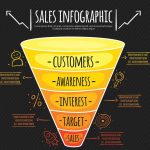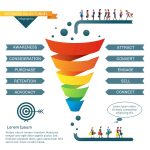Introduction: Learning about the Lead Funnel
Businesses that want to enhance their relationships with potential consumers and increase their conversion rates need to know how to manage and optimize a lead funnel in the realm of digital marketing. A lead funnel helps organizations see the whole customer journey, from the first time they hear about a product until the time they buy it. Companies can make sure they collect, nurture, and convert leads more successfully by carefully leading prospects through each stage of the funnel.
A lead funnel is an important tool that helps you find potential consumers by initially enticing a large group of people and then narrowing it down as they become more interested in and involved with your business. Businesses can use different methods at each point of the funnel to build relationships and boost conversions. This process is important not just for marketing teams, but also for sales teams and customer support reps who want to make the customer experience better overall.
We’ll go into great detail about the idea of a lead funnel in this post, including its stages and how businesses can construct and improve one to get the most sales and keep customers. We’ll also talk about useful tips and tricks for each step of the funnel to make sure your plans are SEO-friendly, very focused, and work well.
What does a lead funnel do?
A lead funnel is the process that a potential consumer goes through before they buy something or do something else useful, like signing up for a service or becoming a loyal customer. It’s a great marketing tool that lets companies see and improve the customer journey.
The lead funnel starts with a wide emphasis at the awareness stage, which is when the goal is to get as many people as possible to see it. It then gets smaller through the stages of interest, contemplation, and conclusion, until just the best leads are left at the bottom, ready to buy.
Why a Lead Funnel Is Important
There are a few reasons why the lead funnel is so important:
- Targeted marketing: This helps organizations focus on the leads that are most likely to buy.
- Better conversion rates: Businesses may make it more likely that leads will become customers by taking care of them at every level.
- Efficiency: By optimizing the funnel, you make sure that your marketing efforts aren’t spent on leads that aren’t interested or aren’t qualified.
- A organized lead funnel can help organizations get more customers and keep them, making the path from the first contact to becoming a loyal customer smoother.
The Steps of a Lead Funnel
A typical lead funnel has four basic stages, each of which shows how interested potential clients are in your business. To manage your funnel well and use the proper approaches at the right time, you need to know what each stage means.
1. The Top of the Funnel (TOFU) is the Awareness Stage.
The first and largest segment of the funnel is the awareness stage. This is when people who might be interested first realize they have an issue or need, but they might not know that there is a solution yet. At this point, companies are just getting their name out there and giving their target audience educational content that talks about their problems.
At this point, the goal is to get as many people as possible to come to the event by using methods like:
- Content marketing is when you provide blog entries, videos, and infographics that teach your audience something.
- SEO: Making sure that search engines find your material for the right keywords.
- Social media marketing is the act of promoting your brand and content on sites like Facebook, Instagram, and LinkedIn.
- At this point, the main purpose is to get people’s attention and let them know about the problem they need to fix. Your messages should teach people, not try to sell them things, and they shouldn’t push products too hard.
2. The Middle of the Funnel (MOFU): The Interest Stage
The interest stage starts when a potential customer knows about your brand. At this point, they start to see their problem more clearly and look at possible ways to solve it. They can be looking into your business and weighing it against other options.
At this point, your job is to nurture the relationship and enhance their interest by offering more specific, value-driven material. Here are some strategies to utilize during the interest stage:
- Case studies and whitepapers show potential customers how your solution has helped other people.
- Webinars and podcasts: Offering in-depth information and allowing potential leads to communicate directly with your business.
- Product demos: Showing leads how your product works so they can see how valuable it is.
- Building trust is the most important thing in the interest stage. You help the prospect decide if your brand is a good fit for their needs by giving them useful, helpful content and showing them how your product can help with their problems.
3. The Bottom of the Funnel (BOFU) is the Decision Stage.
Leads are almost ready to make a decision at this level. They’ve already looked into your product or service, and now they’re looking at other possibilities. At this point, consumers are seeking for particular information, such prices, features, and user reviews, to help them make their final decision.
At this point, good strategies include:
- Product trials or demos: Allow leads to experience the product firsthand and observe how it works.
- Discounts and deals: Giving leads a special deal or offer can encourage them to take the last step.
- Clear calls to action: Making it simple for leads to sign up, buy something, or get in touch.
- At this point, your main goal should be to close the sale. Take care of any last-minute worries and make the process as simple as possible.
4. Retention Stage: Keeping Customers After They Buy
The journey doesn’t end after a lead buys something. The retention stage is all about keeping customers interested, happy, and coming back for more. This step is very important for getting customers to stay loyal, getting the most value out of each customer over time (CLV), and getting recommendations.
Some important methods for the retention stage are:
- Follow-up emails: Checking in on how happy customers are and giving them more value.
- Loyalty programs give benefits for buying something more than once and encourage people to tell their friends about them.
- Customer support is making sure that customers can get great service when they need it.
- Businesses may turn one-time buyers into repeat customers and even brand advocates who will tell others about their good experience by focusing on post-purchase interaction.
How to Make a Lead Funnel
To make a good lead funnel, you need to know who your target audience is, have the necessary tools, and have a plan for getting leads, keeping them interested, and turning them into customers. This is a step-by-step strategy to constructing a lead funnel that gets a lot of conversions:
1. Figure out who your target audience is
The first step to establishing a good lead funnel is to know who your audience is. To make marketing messages that are personal and relevant to them, you need to know their demographics, pain spots, and wants. Creating thorough client personas can help you figure out what your best leads are like and how they act.
2. Use content marketing to get leads
To get leads, you need to make content that your audience finds useful. Some good content strategies are:
- Blogging means writing articles that help your readers find answers and fix problems.
- SEO optimization means making sure that your content shows up for keywords that get a lot of traffic.
- Video marketing is using video material on sites like YouTube and social media to get people interested in your business.
- To make sure that people can easily locate your brand online, you need to make high-quality, SEO-friendly content.
3. Use email marketing to care for leads
Once a lead has showed interest in your business, it’s important to keep them interested by sending them customized emails as they move through the funnel. This means generating email sequences that are useful, help the prospect trust you, and guide them toward making a choice. Make sure to divide your email list into groups so that you can offer each group of leads information that is useful to them.
4. Turn Leads into Customers with Clear Calls to Action
Include explicit calls to action (CTAs) at every step of the funnel. Your CTAs should be strong, clear, and easy to follow. They should get prospects to book a consultation, join a free trial, or buy something.
5. Keep track of and improve your funnel
You can’t just set up a lead funnel and forget about it. Businesses need to keep an eye on its performance all the time to make sure it stays optimized and works well. To find areas where you can improve, keep an eye on important metrics like conversion rates, bounce rates, and lead qualification. Your funnel will get better over time if you test different strategies and keep making changes depending on what works.
Conclusion
Making a Lead Funnel That Works Well
If you want to transform potential customers into loyal buyers, you need to build a lead funnel. Businesses may help prospects go through each stage of the funnel, from awareness to purchase, while building long-term relationships by knowing what each stage is and using specific techniques.
Keep in mind that you need to keep improving and testing your optimized lead funnel. Businesses may increase sales, keep customers, and make more money by routinely checking performance and making changes based on data.














